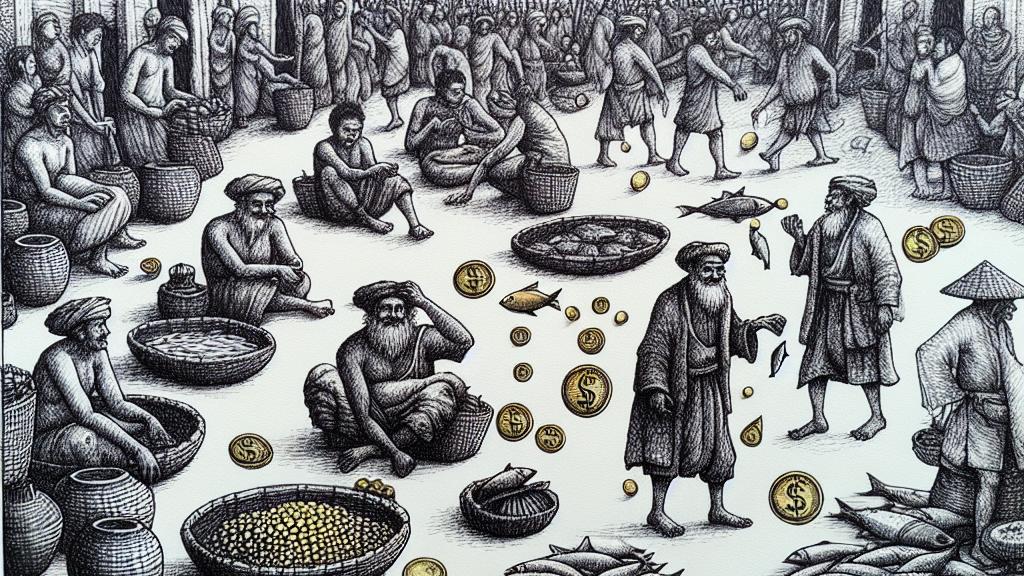Exploring the Origins of Money Through Trade
Overview
- Uncover the remarkable evolution of money as a solution to long-distance trading obstacles.
- The Trade Money Theory provides a captivating fresh perspective on the origins of currency.
- Historical examples vividly demonstrate how early forms of money shaped diverse cultures.

The Shift from Barter to Money
In the lively markets of ancient societies, be it the diverse Indigenous peoples of North America or the vibrant communities of the Bronze Age in Europe, trading was an intricate ballet of needs, trust, and relationships. Picture this: trying to swap a basket of freshly caught fish for corn when the other person might not even have corn to offer! This amusing yet frustrating scenario illustrates the pitfalls of direct barter, where trust and timing were crucial. This is where money swoops in, revolutionizing the process! Money emerged not just to make routine transactions easier but to pave the way for thriving long-distance trade networks, allowing merchants from different backgrounds and regions to engage with one another confidently. With money in their pockets, traders could connect with strangers across vast territories without the constant worry of unmet needs.
The Trade Money Theory
Enter the fascinating realm of Dr. Mikael Fauvelle’s Trade Money Theory, which provides a new twist on the concept of early currency. Instead of seeing money merely as a tool to address local trading glitches, Fauvelle argues that it originated to support burgeoning long-distance commerce needs. Consider the beautiful shell beads that Indigenous tribes used across North America; these weren't just trinkets but crucial instruments for establishing a common understanding of value. These beads enabled traders to engage in commerce over vast distances seamlessly. Imagine traversing different cultures, languages, and social structures, all while confidently conducting trades that relied on the recognized value of those beads! Fauvelle's theory indeed brings to light the complexities and intricacies of early trading practices.
Case Studies in Early Money Systems
Let’s dive deeper into the intriguing example of shell beads once again. Used extensively by various Indigenous groups, these beads were vital in both everyday exchanges and expansive trade networks long before European explorers arrived on the scene. Accounts from those early explorers reveal their astonishment at the sophistication of these trading systems! Trade networks stretched for miles and miles, demonstrating that the origins of money were deeply entwined with human connection and cultural interaction. Each bead represents more than a means of exchange; it symbolizes enduring relationships and shared trade practices, reinforcing the idea that the birth of money was about fostering community as much as satisfying economic demands.
Bronze Age Insights
Now, let’s turn our focus to the remarkable Bronze Age in Europe, where bronze ingots took center stage in trade. Much like the enchanting shell beads used across North America, these metals transformed conventional exchanges into significant economic transactions. Mesmerizing rock art from Scandinavia vividly depicts energetic trade scenes, illustrating that people were not just participating in simple trades but engaging in a thriving exchange of goods across expansive territories. This robust dynamic emphasizes that early monetary forms were critical not just for individual transactions but also as the glue that held diverse economic networks together, ultimately fostering economic growth and cultural flourishing. Thus, the influence of money in early societies was profound, serving as a linchpin that enabled trade and nurtured rich relationships.

Loading...